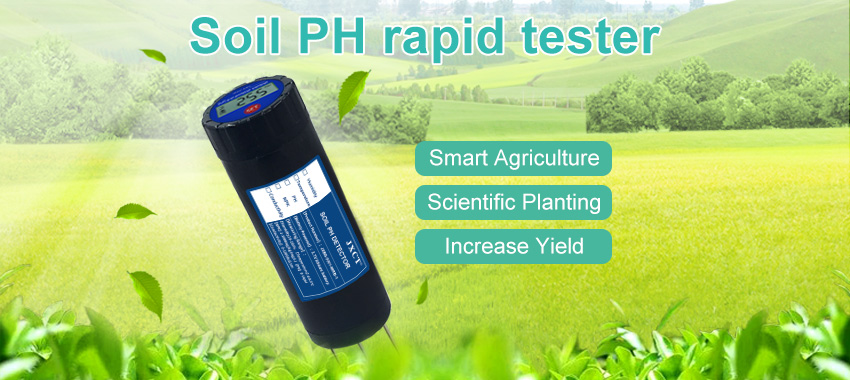Agriculture is the backbone of our food production system, and optimizing crop growth is essential for ensuring sustainable food security. One crucial factor that significantly impacts crop productivity is soil health. Monitoring and managing soil conditions play a vital role in maximizing crop yield and minimizing resource wastage. Soil sensor technology has emerged as a powerful tool in precision agriculture, enabling farmers to gather real-time data about soil properties and make informed decisions for optimal crop growth. This article explores the benefits of soil sensor technology, its working principles, and its potential applications in optimizing crop growth.

Benefits of Soil Sensor Technology
Soil sensor technology offers numerous benefits for farmers and agriculture as a whole. Some of the key advantages include:
- Accurate Monitoring: Soil sensors provide precise and real-time measurements of various soil parameters, such as moisture content, temperature, pH level, and nutrient concentrations. This data allows farmers to monitor soil conditions accurately and make informed decisions regarding irrigation, fertilizer application, and other agronomic practices.
- Resource Efficiency: By providing accurate information about soil moisture levels, soil sensors help farmers optimize irrigation practices. Over-irrigation can lead to water wastage and leaching of nutrients, while under-irrigation can result in stunted plant growth. With soil sensors, farmers can apply water only when necessary, leading to significant water savings and improved resource efficiency.
- Nutrient Management: Soil sensors enable farmers to monitor nutrient levels in the soil, thus optimizing fertilizer application. Excessive use of fertilizers not only wastes resources but also contributes to environmental pollution. By precisely determining nutrient requirements, farmers can apply fertilizers in the right amounts and at the right time, promoting healthy plant growth while minimizing environmental impacts.
- Disease and Pest Control: Soil sensors can also aid in disease and pest management. Certain pathogens thrive under specific soil conditions. By monitoring soil moisture and temperature, farmers can detect conditions favorable for disease development and take preventive measures promptly. Additionally, soil sensors can help identify areas with higher pest activity, allowing for targeted pest control strategies.
Working Principles of Soil Sensors
Soil sensors operate based on different principles to measure various soil parameters. The three common types of soil sensors are moisture sensors, temperature sensors, and nutrient sensors.
- Moisture Sensors: Moisture sensors measure the volumetric water content (VWC) in the soil. There are several types of moisture sensors, including capacitance-based sensors, time-domain reflectometry (TDR) sensors, and gypsum block sensors. These sensors employ different techniques to measure the electrical conductivity or dielectric constant of the soil, which correlates with soil moisture levels.
- Temperature Sensors: Temperature sensors monitor soil temperature at different depths. They typically consist of thermistors or thermocouples embedded in the soil. Temperature data helps farmers track the thermal conditions in the root zone and make appropriate decisions regarding planting dates, irrigation timing, and nutrient availability.
- Nutrient Sensors: Nutrient sensors measure the concentration of essential nutrients in the soil, such as nitrogen (N), phosphorus (P), and potassium (K). These sensors use various techniques, including ion-selective electrodes, colorimetry, or spectroscopy, to quantify nutrient concentrations. Nutrient sensors provide valuable information for precise fertilizer application and nutrient management.
Potential Applications of Soil Sensor Technology
Soil sensor technology has a wide range of applications in optimizing crop growth. Some potential applications include:
- Irrigation Management: Soil sensors help farmers determine the right amount and timing of irrigation. By monitoring soil moisture levels, farmers can avoid over-irrigation or under-irrigation, promoting healthy plant growth and conserving water resources.
- Fertilizer Optimization: Soil sensors assist in optimizing fertilizer application, ensuring that plants receive the required nutrients without excessive use. By monitoring nutrient levels in the soil, farmers can adjust fertilizer rates and timings, maximizing nutrient uptake and minimizing environmental impacts.
- Crop Disease Management: Soil sensors can aid in disease management by monitoring soil moisture and temperature conditions favorable for pathogen development. By identifying areas with increased disease risk, farmers can implement preventive measures, such as adjusting irrigation practices or applying suitable fungicides.
- Precision Planting: Soil sensors provide valuable information about soil conditions, enabling precision planting. By analyzing soil moisture, temperature, and nutrient data, farmers can determine optimal planting locations and depths for different crops, enhancing germination rates and overall crop performance.
Conclusion

Soil sensor technology has revolutionized agriculture by providing real-time data on soil conditions, thus enabling farmers to optimize crop growth and resource management. By accurately monitoring soil parameters such as moisture content, temperature, and nutrient concentrations, soil sensors empower farmers to make informed decisions regarding irrigation, fertilization, and disease management. The benefits of soil sensor technology extend beyond increased crop yields and improved resource efficiency, contributing to sustainable agriculture practices and environmental conservation. As technology continues to advance, soil sensors will become even more sophisticated, providing detailed insights into soil health and further optimizing crop growth for a future of sustainable food production.
